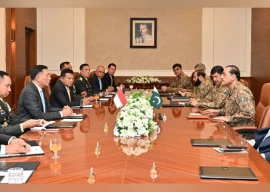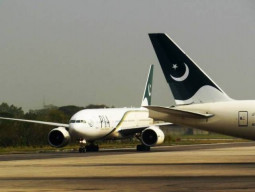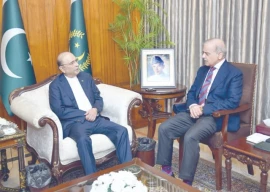
Last year, Ashura processions were attacked in many cities, including Lahore, where such incidents had been unknown. Karachi saw people dying from suicide bombings twice, once on the occasion of Ashura and the second time on the occasion of Chaliswan (the fortieth day of Martyrdom). The cities that lie along the road that goes from Peshawar to Kurram Agency were always under threat because of the Sunni-Shia admixture there and the persisting parallel writ of the Taliban over them.
Quetta in Balochistan, where the Hazara-Shia community is ghettoised and therefore easy to target, is once again tense as the much-weakened provincial government ensures safety to the processionists of Imam Hussain. Much violence has occurred there and in the Shia-majority areas of Parachinar in Kurram Agency and in Gilgit–Baltistan. Parachinar has been cut off from the rest of Pakistan for the past two to three years because the Tehreek-i-Taliban, and particularly Hakeemullah Mehsud, have been killing people on the basis of sect for the past decade.
Why has Muharram become such a season of tragedies for us? The people of Pakistan are not fired by sectarian hatred. Wherever there is no clerical or terrorist coercion, they coexist happily and, not so far back in the past, used to intermarry as well. Scholars who have investigated the closing of the Pakistani mind agree that Pakistan’s sectarian war is a relocated conflict and is a radiation from the fire that was lit in the Middle East and the Gulf when Arab leadership passed from secular leaders to religious ones, and Iran arose as the champion of the scattered Shia communities in the region.
One can date the participation of the state in sectarianism under General Zia in this relocated war. He got the Zakat Ordinance promulgated in 1980 and wrongly applied it to the Shia on the advice — and draft of the law itself — of an Arab jurist sent to Islamabad by Saudi Arabia. In 1987, General Zia allowed the mujahideen fighting the war against the Soviet Union to attack two Shia strongholds, Kurram and Gilgit-Baltistan. In the 1980s, Maulana Manzur Numani of a famous Lucknow madrassa was paid by Rabita al-Alam-e-Islami to get fatwas of Shia apostatisation issued from the madrassas of Pakistan. Numani wrote a book Khumaini aur Shia kay barah mein Ulama-e-Karam ka Mutafiqqa Faisala (Consensual Resolution of the Clerical Leaders about Khomeini and Shiism) and this was widely circulated in Pakistan. The Iraq-Iran war poisoned minds in the region, and organisations linked to jihad began carrying out punishments in light of these fatwas. In 2003, when the Shia Hazaras were massacred in Quetta it was revealed that the fatwas from the major Deobandi seminaries were in circulation in the city before the massacre, but no one took notice. In fact, the Hazaras later put the fatwas on their website straight from the 1988 collection of Manzur Numani, but again the jihad-weakened state took no notice.
There are two ways the state will ‘exclude’ its unfavoured communities. One is by apostatising the identity of a community it thinks deviant; the other by intensifying the identity of the majority community. Both these processes have been resorted to. The Shia have responded by retreating into the non-consensual (with Sunnis) aspects of their religion and fear losing everything if they don’t do this. This conflict is at times bilateral but in most cases it is unilateral, with terrorists killing innocent Shias. But Karachi, more than any other city, has the potential of being the largest and most fearsome arena of this battle.
WikiLeaks has revealed that the region of origin of this conflict is still embroiled in sectarian politics. As Iran moves towards its nuclear objectives, the ‘relocated war’ of Pakistan will move up the graph of intensity. And the state in Pakistan is too weak to look after its people.
Published in The Express Tribune, December 17th, 2010.













COMMENTS
Comments are moderated and generally will be posted if they are on-topic and not abusive.
For more information, please see our Comments FAQ